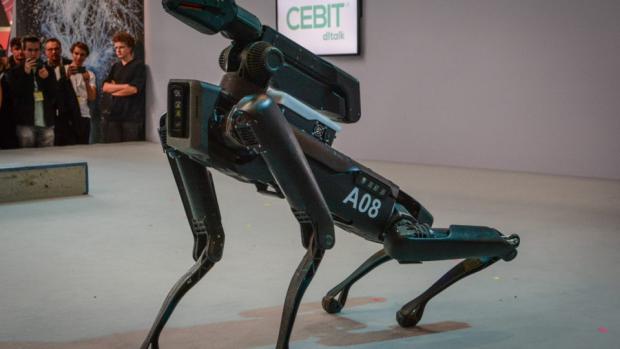
Breaking News
 Windows 10 is DEAD in 2025? -- Here's How I Run It SAFELY Forever (No Updates)
Windows 10 is DEAD in 2025? -- Here's How I Run It SAFELY Forever (No Updates)
 GENIUS ACT TRIGGERED: The Biggest BANK RUN in History is COMING – Prepare NOW
GENIUS ACT TRIGGERED: The Biggest BANK RUN in History is COMING – Prepare NOW
 European Billionaires Funneled $2 Billion into NGO Network to Fund Anti-Trump Protest Machine
European Billionaires Funneled $2 Billion into NGO Network to Fund Anti-Trump Protest Machine
 Japan Confirms Over 600,000 Citizens Killed by COVID mRNA 'Vaccines'
Japan Confirms Over 600,000 Citizens Killed by COVID mRNA 'Vaccines'
Top Tech News
 HUGE 32kWh LiFePO4 DIY Battery w/ 628Ah Cells! 90 Minute Build
HUGE 32kWh LiFePO4 DIY Battery w/ 628Ah Cells! 90 Minute Build
 What Has Bitcoin Become 17 Years After Satoshi Nakamoto Published The Whitepaper?
What Has Bitcoin Become 17 Years After Satoshi Nakamoto Published The Whitepaper?
 Japan just injected artificial blood into a human. No blood type needed. No refrigeration.
Japan just injected artificial blood into a human. No blood type needed. No refrigeration.
 The 6 Best LLM Tools To Run Models Locally
The 6 Best LLM Tools To Run Models Locally
 Testing My First Sodium-Ion Solar Battery
Testing My First Sodium-Ion Solar Battery
 A man once paralyzed from the waist down now stands on his own, not with machines or wires,...
A man once paralyzed from the waist down now stands on his own, not with machines or wires,...
 Review: Thumb-sized thermal camera turns your phone into a smart tool
Review: Thumb-sized thermal camera turns your phone into a smart tool
 Army To Bring Nuclear Microreactors To Its Bases By 2028
Army To Bring Nuclear Microreactors To Its Bases By 2028
 Nissan Says It's On Track For Solid-State Batteries That Double EV Range By 2028
Nissan Says It's On Track For Solid-State Batteries That Double EV Range By 2028
Watch a Robot Dog Learn How to Deftly Fend Off a Human

STUDY HARD ENOUGH, kids, and maybe one day you'll grow up to be a professional robot fighter. A few years ago, Boston Dynamics set the standard for the field by having people wielding hockey sticks try to keep Spot the quadrupedal robot from opening a door. Previously, in 2015, the far-out federal research agency Darpa hosted a challenge in which it forced clumsy humanoid robots to embarrass themselves on an obstacle course way outside the machines' league. (I once asked you, dear readers, to stop laughing at them, but have since changed my mind.) And now, behold: The makers of the Jueying robot dog have taught it a fascinating way to fend off a human antagonizer who kicks it over or pushes it with a stick.
A team of researchers from China's Zhejiang University—where the Jueying's hardware was also developed—and the University of Edinburgh didn't teach the Jueying how to recover after an assault, so much as they let the robot figure it out. It's a dramatic departure from how a hardware developer like Boston Dynamics goes about teaching a robot how to move, using decades of human experience to hard code, line by line, the way a robot is supposed to react to stimuli like, um, a person's foot.
But there's got to be a better way. Imagine, if you will, a soccer team. Midfielders, strikers, and a goalkeeper all do generally soccer-esque things like running and kicking, but each position has its own specialized skills that make it unique. The goalkeeper, for instance, is the only person on the field who can grab the ball with their hands without getting yelled at.
In traditional methods of training robots, you'd have to meticulously code all of those specialized behaviors. For instance, how should the actuators—motors that move a robot's limbs—coordinate to make the machine run like a midfielder? "The reality is that if you want to send a robot into the wild to do a wide range of different tasks and missions, you need different skills, right?" says University of Edinburgh roboticist Zhibin Li, corresponding author on a recent paper in the journal Science Robotics describing the system.

 Carbon based computers that run on iron
Carbon based computers that run on iron

